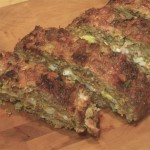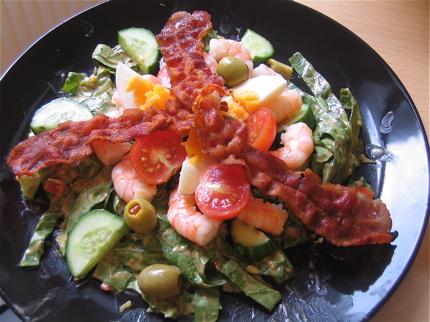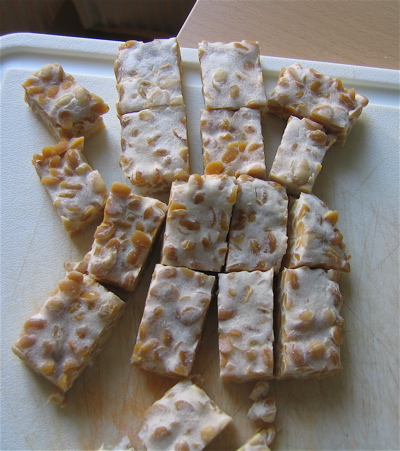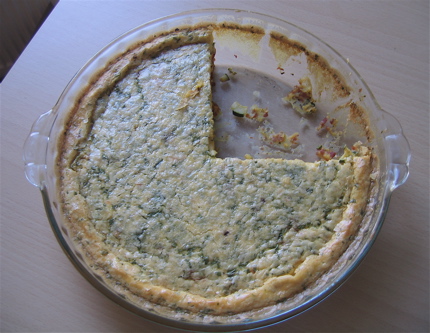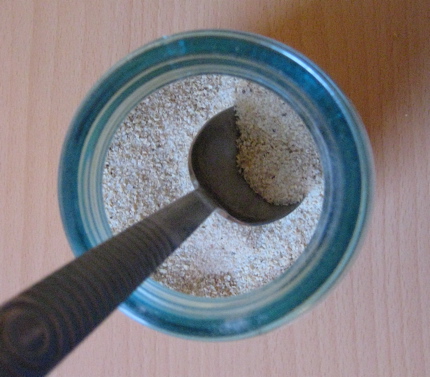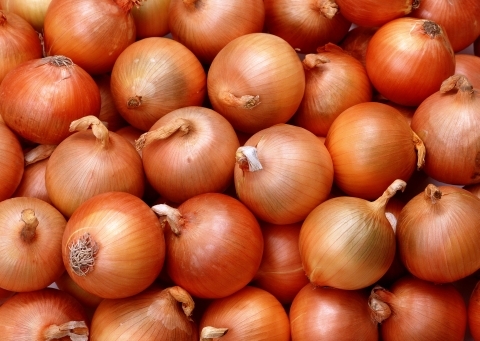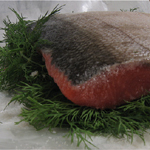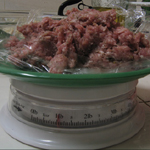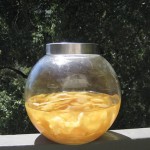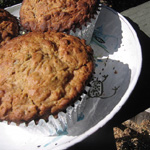Persimmon Applesauce
3 medium-small apples
2 medium Fuyu persimmons
1/4 c. apple cider (or subst. 1/4 c. water plus 1 tsp brown sugar)
1/3 c. waterCore apples (you do not need to peel them) and cut into large bite size pieces. Cut tops off persimmons and cut into large bite size pieces. Add fruit chunks to medium pot, along with cider and water.
Cover and bring mixture to a simmer over medium-high heat. Reduce heat to medium-low and simmer for about 30 minutes, until apples have fallen apart and persimmon is very soft. Allow to cool for about 10-15 minutes.
Pass mixture through a food mill (use the coarse disc if you like chunky sauce, or use the medium one if you prefer it to be more smooth). Stir so that sauce has an even consistency.
Spoon into individual bowls, garnish with nutmeg or cinnamon if desired, and enjoy!
(Note: if you don’t have a food mill, you can still easily make this recipe. To do so, simply adjust recipe by peeling the apples and persimmons before adding to the pot, then cook as directed above. Then, use something like a potato masher or the back of a fork instead of a food mill.)
* * * * * * * * * * * * * * * * * * * *
Applesauce, in my eyes, is a food that has gone and come again. Tainted by years of finding plastic applesauce tubs in my grade school lunch box (when what I really wanted was soft-baked chocolate chip cookies…), I swore off applesauce once I was old enough to make my own food choices. I didn’t touch the stuff for probably 10 years until I came across a jar of 100% natural applesauce at my local natural foods store. The ingredient list was short: apples, water. Standing in the grocery store aisle, I found myself reminiscing about my childhood, and on a whim, I picked up a jar and brought it home. The stuff I was eating as a kid was a far cry from the delicious-ness I found in the jar at hand. I grew up in the 80’s during the rise of nutritionism and ‘equivalent chemical substitutes’, so I imagine what I was eating back then was packed full of unpronounceable chemicals and additives. The real thing, though, is delicious, nutritious, inexpensive, and extremely simple to make.
This recipe’s addition of persimmons was motivated, oddly enough, by a web traffic analysis tool I use for Modern Beet that tells me what search terms are bringing visitors to my site. The search term was ‘persimmon applesauce’, and when I saw it I thought, ‘wow, that sounds delicious!’, and decided to give it a try. Sometimes inspiration comes from strange and unexpected places.
The basis of this recipe is apples and persimmons, and the ingredient list is very short. Use Fuyu persimmons (firm and squat), not Hachiya persimmons (elongated and gelatinous when ripe). Regarding which type of apple to use, many different types would work. One that is both sweet and tart is my preference, like Braeburn or Pippin. If you use a tart apple like Granny Smith, you might want to add a tablespoon or two of brown sugar to sweeten the sauce. You could also use a mixture of sweet and tart apples and omit the sugar.
On a side note, at the farmer’s market this morning I found a variety of apple I had never seen before called (I think) Black Ridge, which the apple purveyor described as sweet and tart, similar to a pippin. It’s not too surprising that I’d never heard of this apple type before, as there are thousands and thousands and thousands of different apple types. In fact, if left to nature, EVERY apple tree would bear a different type of apple. Like how a human child is not an exact replica of its parent, neither does an apple tree produce the same fruit as its parent. But the apple tree goes farther– a human child has many of the same genes as its parent and will probably look somewhat similar–same hair color, same eye color, etc.; an apple tree grown from seed, however, has little or no resemblance to the tree on which it grew. This means that a seed from the sweetest apple could potentially produce the sourest apple you’ve ever tasted. How odd. In order for a tree to grow the varieties we’re familiar with — Delicious, Granny Smith, Fuji, Braeburn, Pink Lady, etc. — it must be grafted with a piece of an existing Delicious, Granny Smith, Fuji, Braeburn, Pink Lady, etc. tree, at which point it becomes an exact replica of the grafting tree. It’s both marvelous and slightly upsetting that humans have taken a plant with the potential for infinite variety and reduced it to a small handful of commercially viable types. (If you’d like to learn more about this, Michael Pollan’s The Botany of Desire has an incredibly interesting chapter devoted to just this)
« Pomegranate Glazed Root Vegetables with Israeli Couscous | Home | Simple Basil Buttermilk Salad Dressing »
